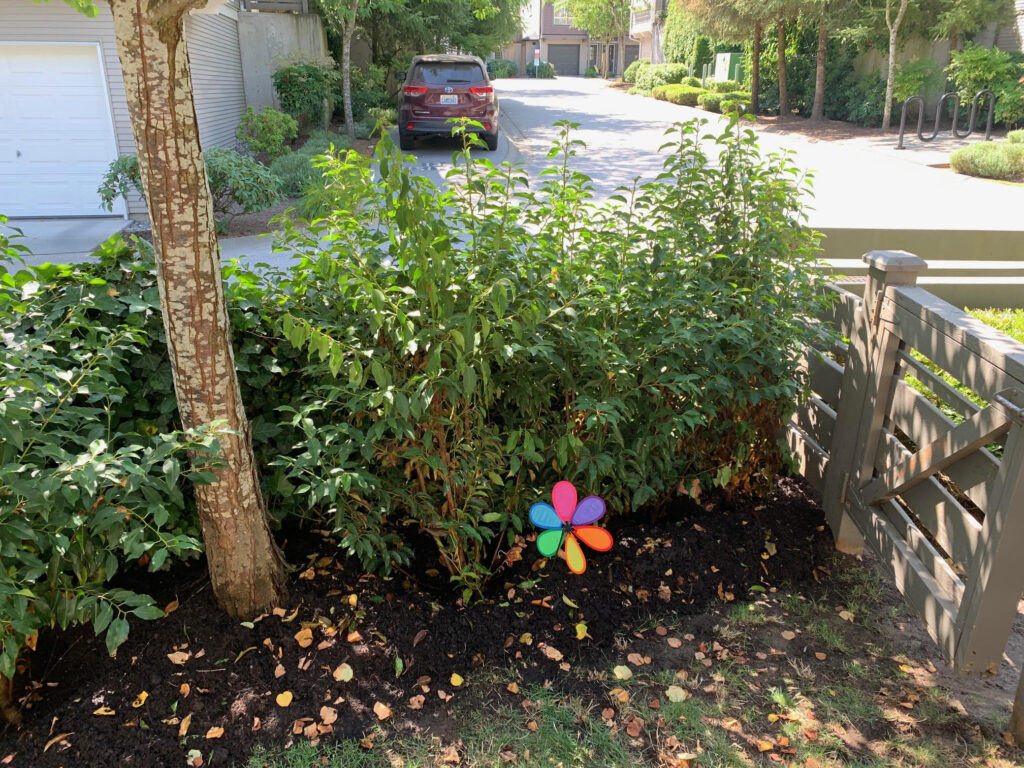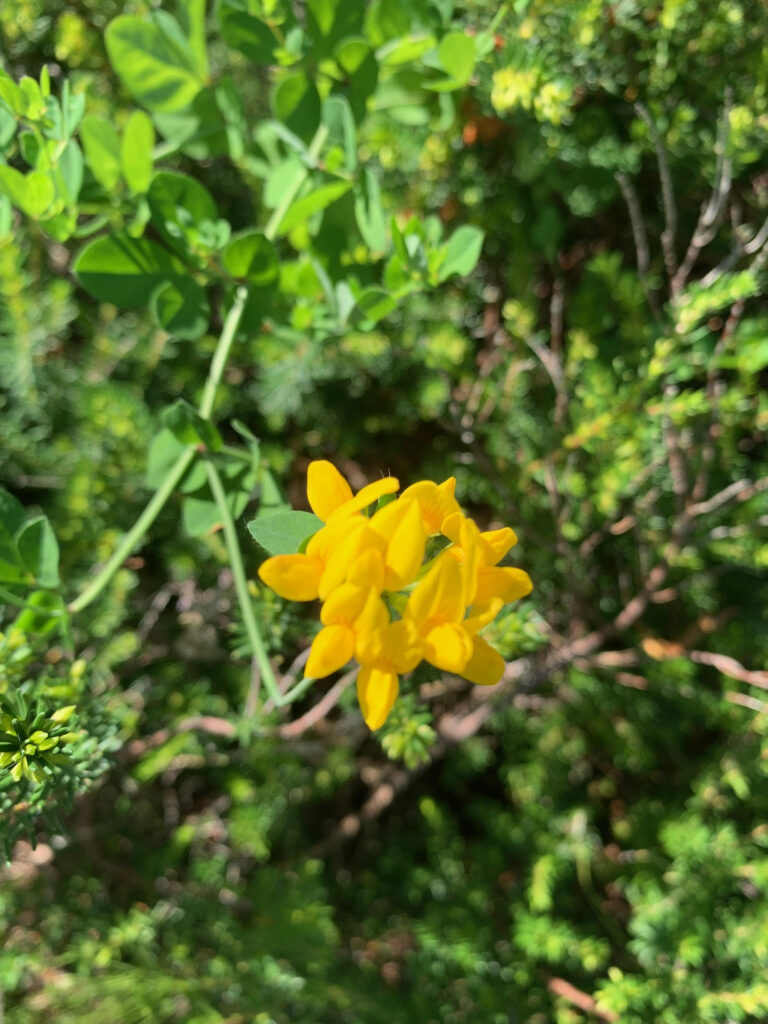Vinca minor welfare check
This past week I stopped to check on a periwinkle planting I did a few seasons ago. The area is a small sloping bed and planting periwinkle (Vinca minor) was our last resort try. For whatever reason, grass wouldn’t grow on the “hump”.
It’s possible that water moves downslope and therefore leaves the bed too dry, or there is competition from the oak tree (Quercus palustris).
We top-dressed and over-seeded the spot, and we also tried hydroseeding: the grass wouldn’t survive!
Vinca minor
Since there was already a lot of periwinkle growing above the bed, under the oak tree, adding more was a no-brainer, even though many people consider periwinkle invasive. Nurseries still sell the plant and why not? It has nice purple flowers, and it grows fast like an invasive plant. If you need a groundcover plant, vinca is a good choice.
Roughly two seasons ago I planted many baby plants and wished them well. I knew they would do well. It was nice to see them spreading and filling out the open spaces. I just found one small bare spot but overall the planting was a success. Check my YouTube short below. Click like and subscribe, too!
Conclusion
It’s a lot of fun to check on your work, especially when you have success. And in this case, success was almost guaranteed because I knew that Vinca minor was a fast-growing groundcover plant. It saved us after we failed to establish grass on the “hump”. To this day I don’t know why grass wouldn’t take there.
If you need a fast-growing groundcover plant, Vinca minor is a good choice, especially if you can keep it contained. It is considered borderline invasive and some people discourage you from planting it. Personally I find its purple flowers attractive.
For more videos, please visit my YouTube channel, like, subscribe and comment!









